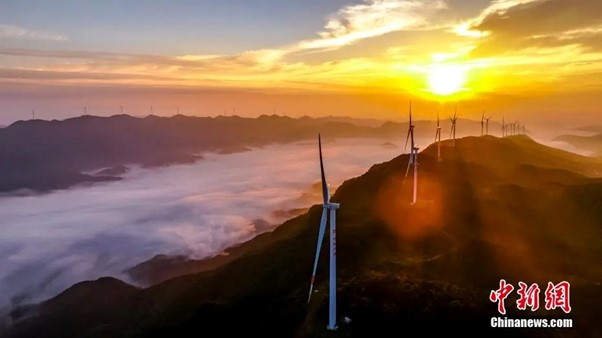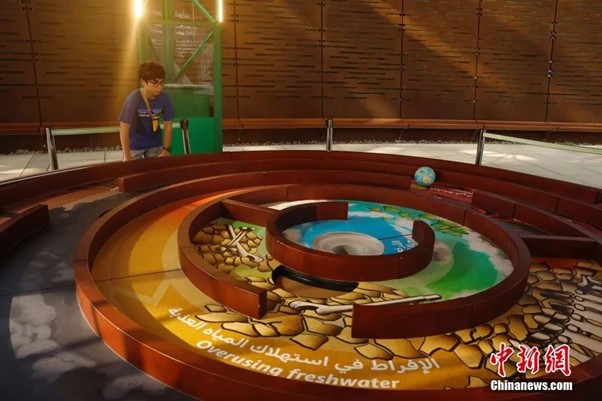As COP 29 finishes, we ask what China energy transition looks like and how it plays a part in combatting climate change globally.
The twenty-eighth Conference of the Parties (COP28) to the United Nations Framework Convention on Climate Change (UNFCCC), held in Dubai, United Arab Emirates, last year, completed the first global stocktaking under the Paris Agreement and sent a strong signal to the international community of solidarity and cooperation in combating climate change. However, the global green transition still faces challenges.
COP29 was just held in Baku, the capital of Azerbaijan, where countries sought consensus on furthering the global green transition. Against the current backdrop of increased global uncertainty, is the energy transition challenged by rising security concerns? What is China’s role in the global energy transition? Zou Ji, CEO of the Energy Foundation and President of China, was interviewed by East Meets West on these issues.
Zou Ji, CEO and President of the Energy Foundation in China, has worked for many years in fields related to integrated decision-making on economic development, energy, environment and climate change strategies and policies. He was the Deputy Director of the National Centre for Climate Change Strategies and International Cooperation of the National Development and Reform Commission of China, and was a member of the Chinese government’s delegation to the United Nations Climate Negotiations.

The current global situation is marked by increased uncertainty and the green transition is facing pressures and challenges. Will the energy transition increase energy security risks?
It is first necessary to discern whether the focus on ‘security’ is a true or a false proposition, especially when it is pitted against the green energy transitions. I would answer in a very simple way: it is a false proposition.
Currently, fossil energy sources, such as oil and gas, do not represent ‘security’, especially in the geopolitical context, where fossil energy imports face uncertainties. For China and most countries, renewable energy is the safest source of energy available. Although renewable energy system faces many challenges at the initial stage of its establishment, once it is established, the road will become wider, because solar and wind energy are inexhaustible. Therefore, the transition to renewable energy is precisely to address the issue of security.
Regarding the concept of security, we believe that security considerations require the rapid advancement of renewable energy in order to reduce the insecurity of fossil energy. Such a prospect is already visible and has a realistic basis. There is no dichotomy between energy transition and energy security, and the sooner renewable energy systems are in place, the sooner energy security can be achieved.
What role has China played in the world’s energy transition? Has China’s role changed in recent years?
China participated in the conclusion of the United Nations Framework Convention on Climate Change in 1992, when its gross domestic product (GDP) per capita was less than $1,000 and it was still a lower-middle-income country. At that time, China had not yet built significant amounts of critical infrastructure and needed to develop, and therefore needed to have emission rights.
In 2019, China’s per capita GDP has exceeded US$10,000, and the growth in per capita GDP means that China’s economic development stage is completely different. The infrastructure needed for development is getting better and better, and the pillar industries for economic growth have changed. In the future, China will rely heavily on strategic emerging industries such as new energy vehicles, biopharmaceuticals, chips, big data and cloud computing to support economic development. China’s residents are gradually decoupling rising incomes from emissions, and both energy and carbon elasticities are declining. Today we want to enjoy a better environment, and in turn we are more concerned about global environmental and climate issues.

Currently, a new round of technological and industrial revolution marked by new energy is taking place worldwide. Over the past decade, China’s photovoltaic costs have been reduced by about 80%, providing good technical support for China and the world to deal with climate change and energy transition, and China’s position and role in the global green transition has gradually come to the fore. Today, China’s leading role in the world’s energy transition is no longer just empty talk, but a reality supported by enterprises, technology, cost, and fixed asset investment at the level of several trillion RMB that has already been realised.
In what ways can China make further practical contributions to the global green transition?
As of July this year, China’s combined installed wind and solar power capacity reached 1.206 billion kilowatts, achieving the set target six years ahead of schedule. China is playing a substantial role in driving the global energy transition and should move forward more aggressively.
‘Small yards and high walls’ and damage containment are not the way forward for human society; instead, we should cooperate to solve the increasingly urgent global climate problem. China, with its growing green industry, is a strong practitioner and implementer of green transformation and has the responsibility and ability to make a greater contribution to green transformation on a global scale.

What room for cooperation and discussion exists in the future United Nations Climate Change Conference? What role can China play in it?
According to the International Energy Agency (IEA) report, China will add more than half of the world’s new renewable energy capacity in 2023. In addition to China, the rest of the world will need to increase its average annual growth rate by 36% over the remainder of the period until 2030 in order to achieve the set target. The report notes that even if all countries fully implement current targets, the world will still be 30% short of the goal of increasing global installed renewable energy capacity to more than 11,000 gigawatts by 2030.
The climate problem is so serious that we must take positive action to accelerate development in the relevant areas. Climate ambitions cannot be castles in the air, but should be based on feasible implementation. China’s photovoltaic, wind and electric vehicle industries are developing rapidly, laying the industrial foundation for a global green transition.
China had the confidence and the conditions to achieve the climate goals, and could contribute more proactively to that end by integrating its own interests with the global interest on the basis of scientific and technological principles, following the logic of the market, and advocating the ethical values of sustainable development. At the same time, combating climate change also requires the joint efforts of all countries in the world, which need to strengthen cooperation and jointly promote the Paris Agreement process.
If you liked this article why not read: ‘Riding Alone for Thousands of Miles’: Dutchman Ole Bouman’s ‘Journey to the East’














